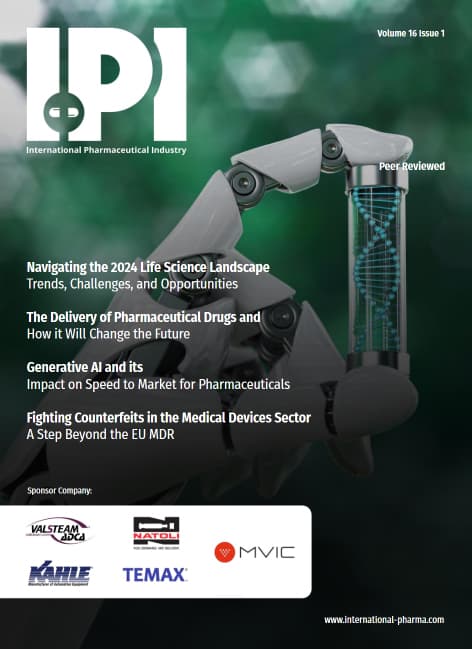3D printing or additive manufacturing (AM) technology has considerable potential to more closely align tablet manufacture with modern requirements and is a growing area of focus for the pharmaceutical industry. A unique benefit is the ability to deliver customisation at marginal cost with printers easily switched from product to product simply by changing feedstock and loading the appropriate file. This flexibility makes 3D printing especially interesting for the manufacture of tablets with sophisticated geometries and delivery profiles, for personalised medicines, and for decentralised, ‘on-demand’ manufacture in inaccessible locations. The potential to use 3D printing to accelerate drug development is also considered as evidenced by a Merck initiative to develop AM technology in the first instance for clinical trial tablet production.1 Saving in time and API requirements, along with the flexibility to easily modify parameters such as a dosage and release profile are all notable gains.
A key challenge for pharmaceutical manufacturers looking to exploit 3D printing technology is to determine requirements for excipients. In this article, we consider the role of powder rheometry within this context. Industries leading the way in powder-based AM have already established the importance of powder flowability and the relevance of dynamic powder properties. Here we consider the properties that can be usefully measured to identify excipients that will print well referencing a study carried out by researchers at Deakin University (Victoria, Australia).2
3D Printing Technologies for Drug Product Manufacture
Looking across the current 3D printing landscape for pharmaceuticals it is clear that multiple technologies may emerge as valuable. For example, the M3DIMaker platform (FabRx, UK) is a fused filament fabrication (FFF) desktop system designed for drug product manufacture at the point of dispensing, in hospitals and pharmacies.3 This commercialised design enables both fused deposition modelling (FDM) and direct powder extrusion a novel technique that utilises a print head based on a single screw hot melt extruder. Direct powder extrusion eliminates the need to form a filament prior to printing thereby simplifying manufacture and addressing an important limitation of FDM for certain actives and excipients.4
Proof-of-concept and comparative studies from Merck, on the other hand, highlight the benefits of powder bed fusion, specifically selective laser sintering. These include the ability to cost-effectively produce tablets in substantial quantities that meet shape and surface roughness specifications, have satisfactory levels of mechanical variability and deliver a uniform distribution of the active ingredient.1 Spritam, the only 3D-printed drug to have achieved FDA approval is also manufactured using a powder-based processing technique, binder jetting. This technology is particularly useful for the production of highly porous and orodispersible products but is more generally suitable for high-dose loadings and for more complex formulations.5
This brief survey points to the centrality of powder-based processes and by extension powder handling in the application of 3D printing in pharmaceutical manufacture. Learning how to formulate powders for optimal performance in the print environment is therefore vital if the industry is to take full advantage of this innovative manufacturing technique.
Looking Inside the Printer: A Unique Environment for Powders
In AM processes powders are stored in and discharged from hoppers and other feeders, as in conventional unit operations but printing itself applies a specific and less frequently encountered environment.
Figure 1 shows the key features of a generic printer for binder jetting. The roller spreads powder dispensed onto the build plate to sequentially form uniformly packed, fine layers. The printer head then releases binder droplets to selectively bind areas of successive layers to form the desired product. Printing success, particularly speed and by extension throughput, is heavily reliant on the ability of the powder to flow and spread easily across the build platform and pack consistently within a layer that is typically just tens of microns in depth. Porosity or voidage in the deposited bed inhibits the binding of the layers, increasing the likelihood of poor mechanical integrity and non-uniformity in the finished product. Other powder bed fusion processes, notably selective laser sintering, are equally dependent on this core step of powder layer formation.

























